Wisconsin Fruit Crop Scouting Report: July 28, 2025
Hello fruit growers, we are excited to share apple and grape scouting updates with you this year through the Wisconsin Fruit Newsletter. Rain continues to be persistent, with a total of 1.82” of precipitation between July 14 and July 28, along with continued high humidity and warm temperatures. These conditions have been ideal for summer diseases in apples and grapes. As a reminder, this newsletter will cover apple and grape phenology, general scouting observations, and includes an overview of degree day accumulation. Growers can reference the Midwest Fruit Pest Management guide for further information on pest management best practices.
Grapes
Phenology
At the West Madison Agricultural Research Station (WMARS) in Madison, WI, buds average around E-L* stage 33 (Berries still hard and green) on Petite Pearl and La Crescent to E-L stage 35 (Veraison – Berries begin to color and enlarge) in Brianna, Frontenac and Marquette.
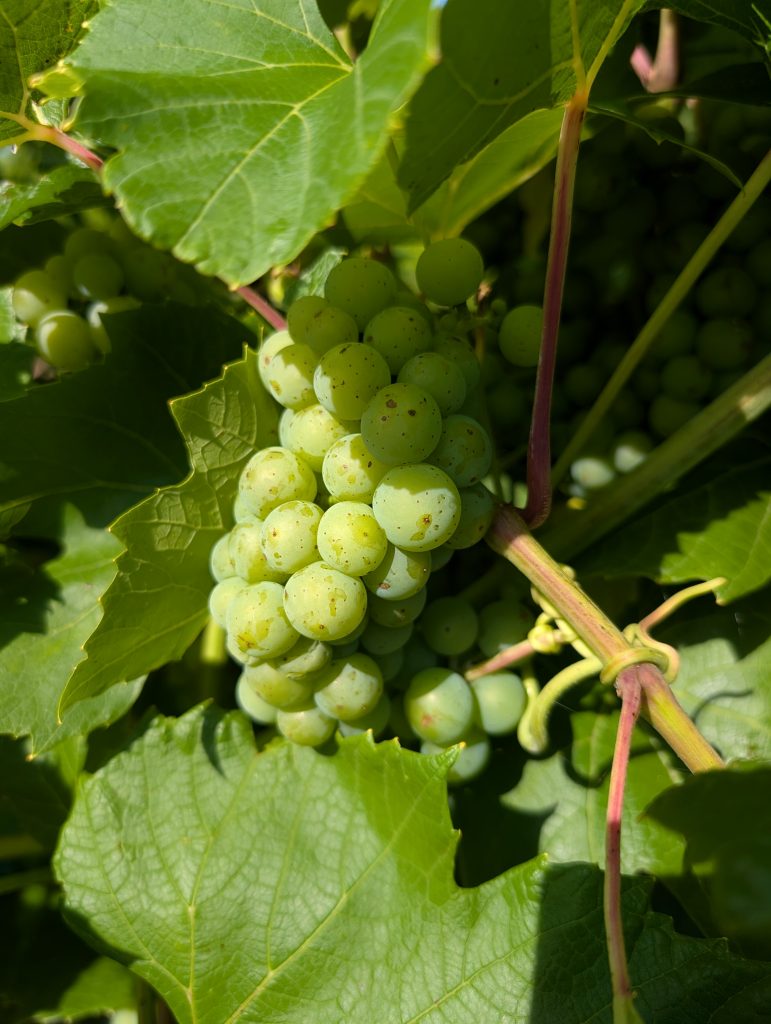
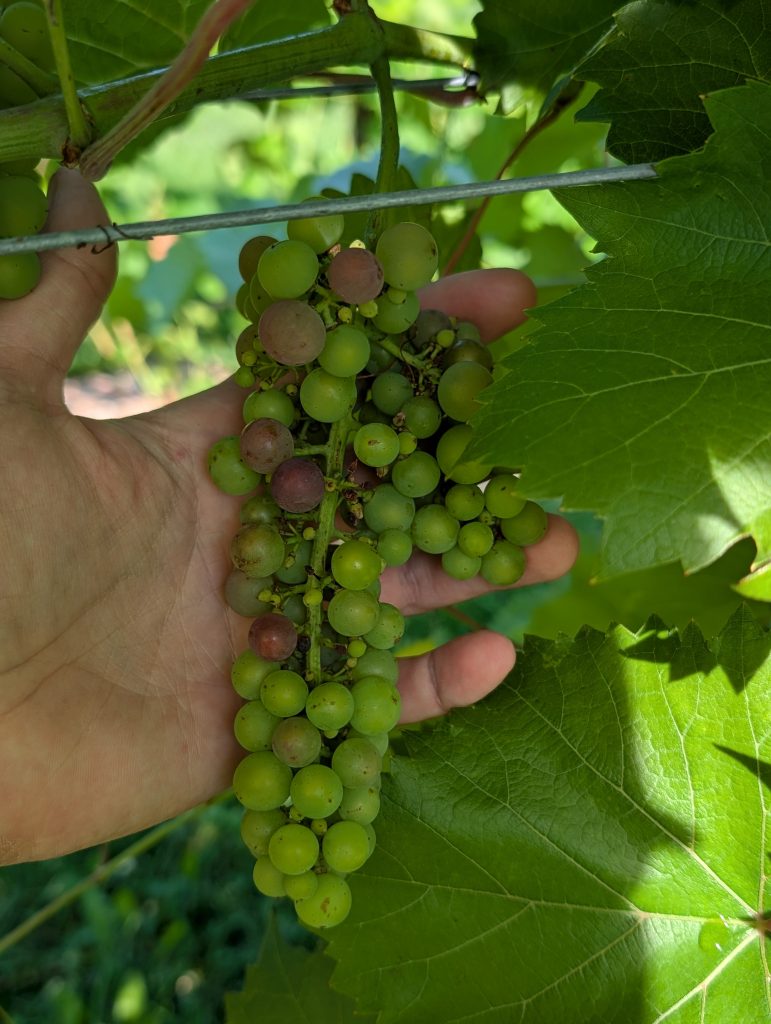
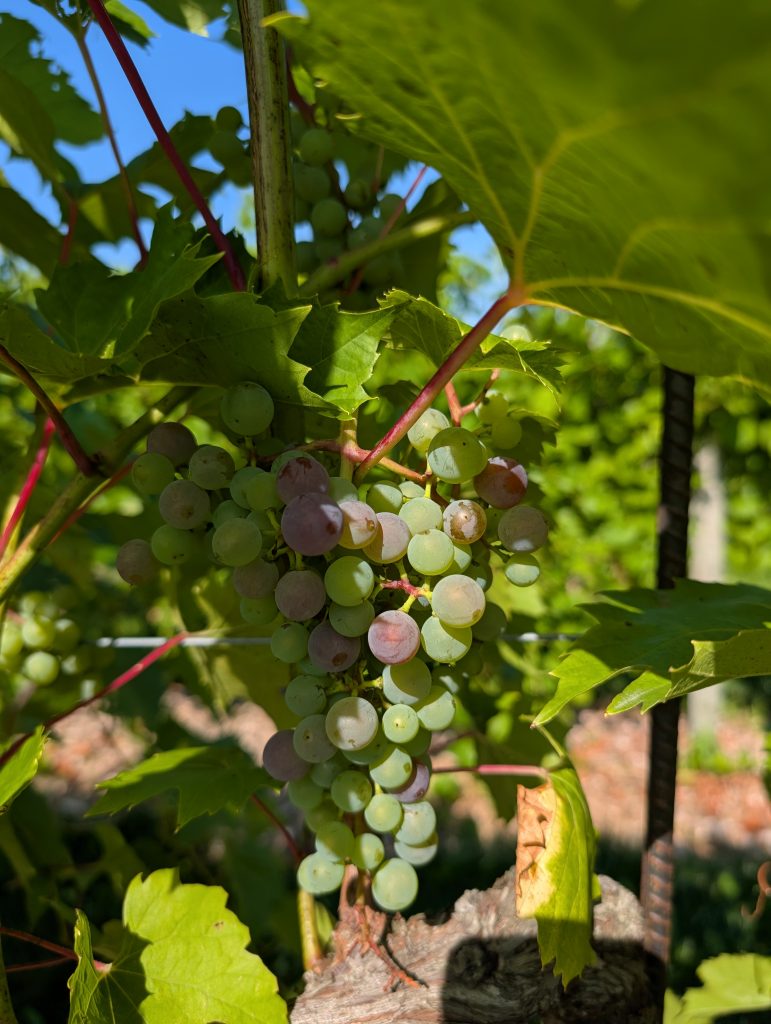
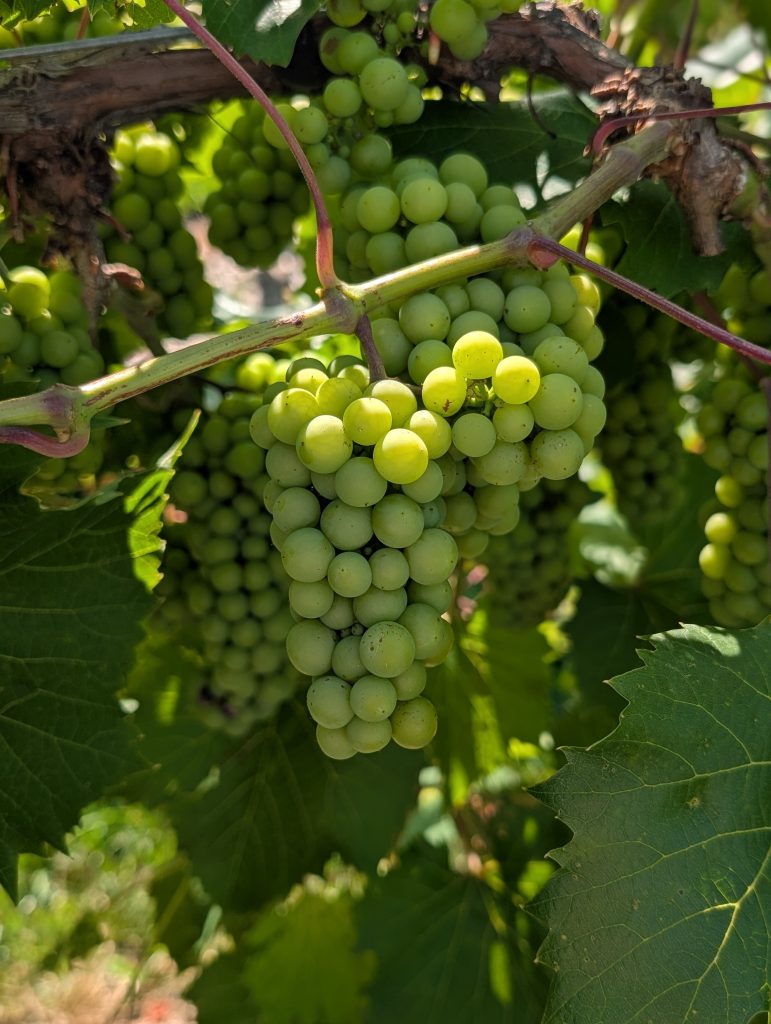
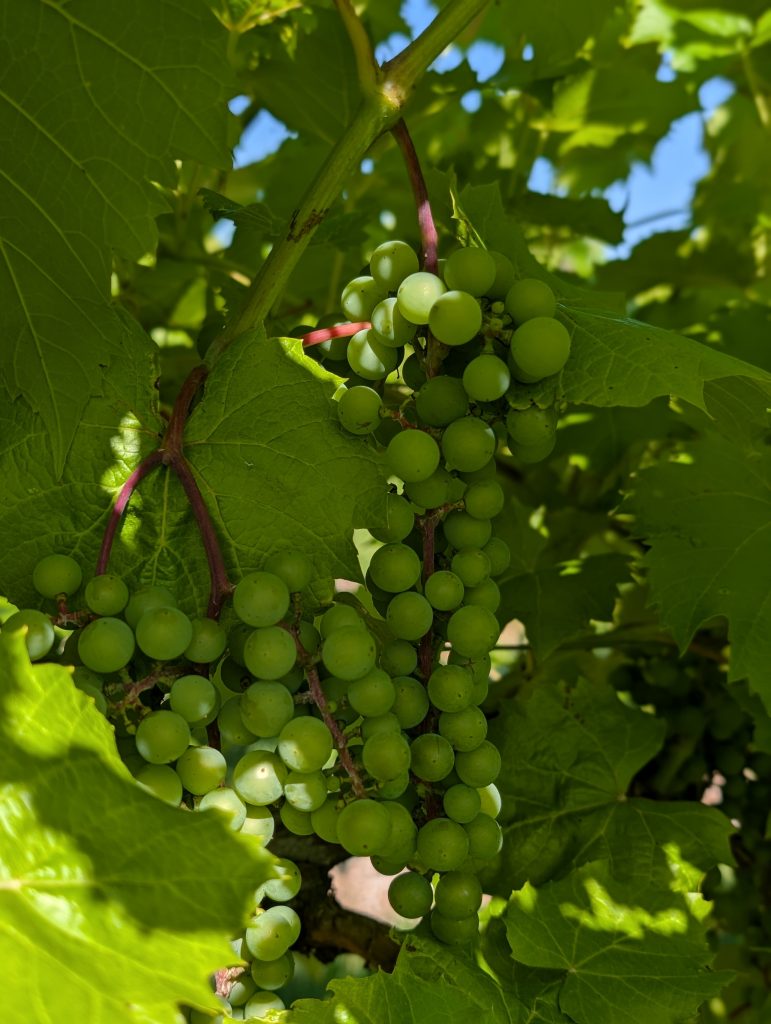
*E-L stands for Eichhorn-Lorenz growth stages scale to describe grapevine development.
Growing Degree Day (GDD) Accumulations
Below displays the GDD accumulations from April 1 through July 28 for the current and last two seasons. This data is collected using the NEWA website. You can visit their “About degree days” page to learn more about the concept of degree days as well as the formulas utilized for calculations.
Growing degree day (GDD) accumulation as of July 16 (April 1 start date; base 50°F BE*) at the WMARS and PARS.
| Location | 2025 | 2024 | 2023 |
| Verona WMARS | 1634 | 1626 | 1672 |
| Sturgeon Bay PARS | 1163 | 1174 | 1276 |
*BE = Baskerville-Emin calculation method
Pests and other considerations
- Grape phomopsis and black rot continues to be observed in West Madison. Black rot fruit infections have been reported across much of Wisconsin. Black rot fruit infections will eventually shrivel into a blue/black hardened fruit “mummy”.
- Growers should keep an eye out for sour rot and botrytis bunch rot, especially around veraison. Check out this week’s article on summer fruit rots.
- Grape berry moth injury has been observed at West Madison and in Southern WI. Growers may consider using monitoring traps to determine population pressure and/or time management decisions.
- Japanese beetles have been observed at West Madison and will continue to emerge through September. Females prefer to lay eggs in areas with short grass and high soil moisture, about 2-4” into the soil. Consider pausing mowing and watering through mid-August to deter egg laying.
- Overview of grape insect/mite monitoring and management: Grape Insects and Mite Pests, 2024 Field Season (Cornell, 2024).
- Veraison has been observed in Frontenac and Marquette in Southern WI. Growers may consider using bird netting to deter bird feeding.
- Don’t forget to collect petiole samples for nutrient analysis at veraison—this is the standard timing to assess vine nutrient status and guide fertilization decisions.
- With the hot weather, be sure to monitor irrigation needs—especially for newly established vineyards. Without adequate water, young vines may halt growth. If irrigation is available on your farm, use it to support optimal early development, as water is critical for maximizing growth during establishment.
Apples
Phenology
In southern Wisconsin, Zestar is beginning to show some color, driven by the sunny, warm weather, and honeycrisp are gaining size. Zestar is typically harvested in mid to late-August and Honeycrisp first picking typically occurs in early-September.
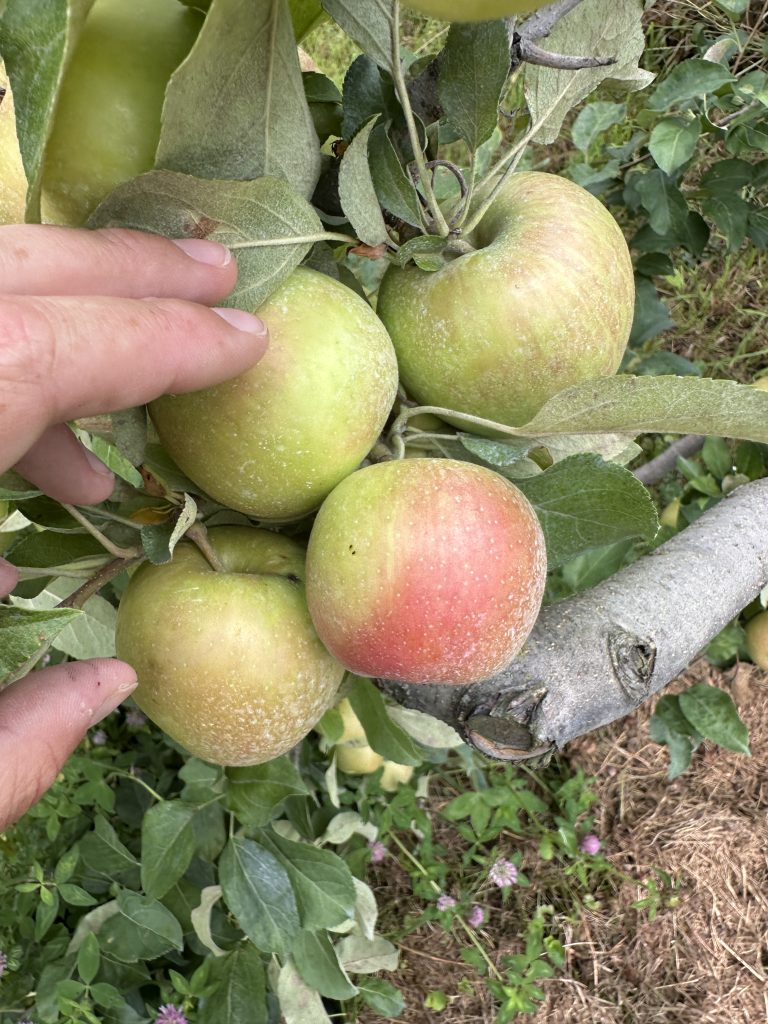
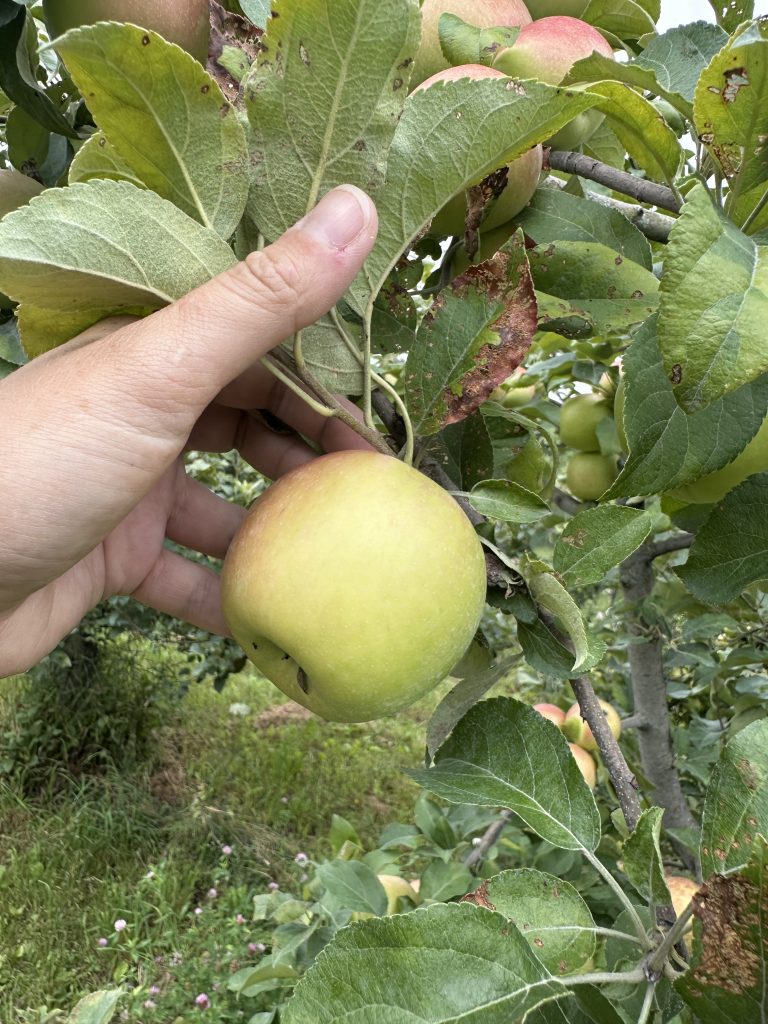
Growing Degree Day (GDD) Accumulations
We are tracking growing degree days (DD 43 °F BE) from January 1 to monitor bud development in apples. This data is collected using the NEWA website. You can visit their “About degree days” page to learn more about the concept of degree days as well as the formulas utilized for calculations. Growing degree day (GDD) accumulation in 2023, 2024 and 2025 as of July 28 (January 1 start date; base 43°F BE*).
| Location | 2025 | 2024 | 2023 |
| Verona WMARS | 2441 | 2489 | 2380 |
| Gays Mills | 2458 | 2450 | 2369 |
| Eau Claire | 2251 | 2191 | 2240 |
| Door County PARS | 1813 | 1904 | 1910 |
| Fond Du Lac | 2199 | 2426 | 2317 |
| Racine | 2264 | 2535 | 2218 |
*BE = Baskerville-Emin calculation method
Other considerations:
- Degree day accumulation has hit ~300 degree days from second generation codling moth biofix in several locations in southern WI. Continue monitoring traps weekly and keep an eye on degree-day accumulation in your area.
- Apple maggot will continue to emerge through September. Growers should continue using red sphere traps to monitor populations and time management decisions.
- Japanese beetles pressure has dissipated for now. Keep in mind population levels may fluctuate, with adult emergence occurring through September.
- Check out the WI DATCP Orchard Insect Pest Bulletin for more information on current insect trap captures across the state.
- Need insect scouting supplies, lures or traps? Place your order here: Great Lakes IPM
- Warm and rainy weather continues to push along bitter rot in some orchards; see the article on bitter rot management from the July 4 newsletter.
- Powdery mildew has been observed in orchards in southern WI. Review best management practices from the June 5th newsletter here: Powdery mildew.
- Sooty blotch and flyspeck has been observed in Southern WI, pushed along by warm, humid conditions. Continue monitoring NEWA models and scout susceptible varieties.
- In this heat, make sure newly planted apple trees are getting enough water. Without irrigation, growth can stall during establishment. Irrigation frequency depends on soil type—sandy soils need water daily or every two days, while heavier soils like silt or clay can be watered less often by applying several days’ worth of water at once.
That’s all for this week – good luck to all WI Fruit Growers!
This article was posted in Apples, Disease, Grapes, Insects and tagged Amaya Atucha, Apples, Courtney Meeks, disease, gdd, Grapes, growing degree day accumulations, Growing Degree Days, insects, Josie Dillon, Leslie Holland, pests, phenology, Wisconsin Fruit Crop Scouting Report.
